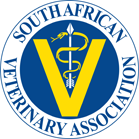Original Research
Prevalence and body distribution of sarcoids in South African Cape mountain zebra (Equus zebra zebra)
Journal of the South African Veterinary Association | Vol 78, No 3 | a306 |
DOI: https://doi.org/10.4102/jsava.v78i3.306
| © 2007 H.J. Marais, P. Nel, H.J. Bertschinger, J.P. Schoeman, D. Zimmerman
| This work is licensed under CC Attribution 4.0
Submitted: 04 June 2007 | Published: 04 June 2007
Submitted: 04 June 2007 | Published: 04 June 2007
About the author(s)
H.J. Marais,P. Nel,
H.J. Bertschinger,
J.P. Schoeman,
D. Zimmerman,
Full Text:
PDF (212KB)Abstract
There are no reports in the literature describing any tumours, and specifically sarcoids, in zebras. The equine sarcoid, a locally aggressive, fibroblastic skin tumour, is the most common dermatological neoplasm reported in horses. The Cape mountain zebra (CMZ) has been described as one of the most vulnerable mammals in South Africa with current populations existing in isolated units. All South African CMZ are descendants from no more than 30 individual animals originating from 3 populations, namely the Mountain Zebra National Park, and Kammanassie and Gamka Mountain Nature Reserves near Cradock. The possibility therefore exists that the existing populations arose from a very small gene pool and that they are considerably inbred. A reduction in major histocompatibility complex diversity due to genetic bottlenecks and subsequent inbreeding probably contributed to uniform population sensitivity and the subsequent development of sarcoid in two CMZ populations, namely in the Bontebok National Park and Gariep Nature Reserve. The entire population of CMZ in the Bontebok National Park was observed and sampled during 2002 to document the prevalence and body distribution of sarcoids. During the same year, a comparative study was carried out on an outbred population of Burchell's zebra in the Kruger National Park. The prevalence in CMZ in the Bontebok National Park was 53 %, while the Burchell's zebra in Kruger National Park had a prevalence of 1.9 %. The most common sites for sarcoid in CMZ were the ventral abdomen and limbs. Prevalence of sarcoids in horses recorded in the literature varies between 0.5%and 2%. The Gariep Nature Reserve recently reported a prevalence of almost 25 % in CMZ in the reserve.
Keywords
Head; Bodily Distribution; Bontebok National Park; Cape Mountain Zebra; Gariep Nature Reserve; Prevalence; Sarcoid
Metrics
Total abstract views: 3503Total article views: 2708
Crossref Citations
1. BPV-1 infection is not confined to the dermis but also involves the epidermis of equine sarcoids
Sabine Brandt, Reinhard Tober, Annunziata Corteggio, Stefanie Burger, Sonja Sabitzer, Ingrid Walter, Christina Kainzbauer, Ralf Steinborn, Lubna Nasir, Giuseppe Borzacchiello
Veterinary Microbiology vol: 150 issue: 1-2 first page: 35 year: 2011
doi: 10.1016/j.vetmic.2010.12.021
